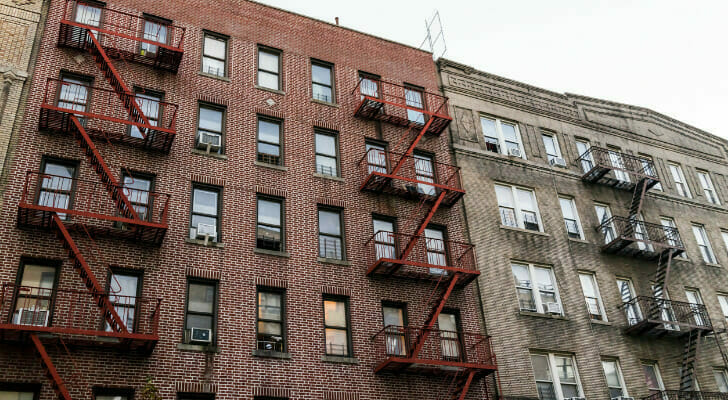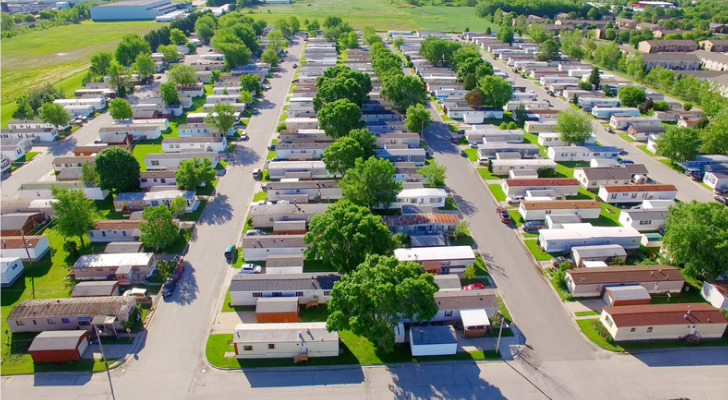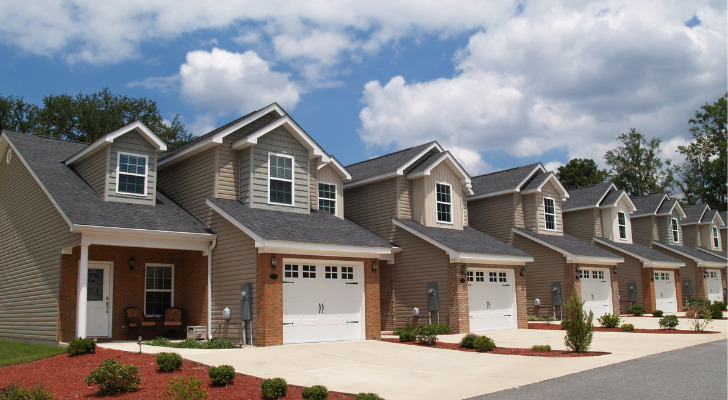There are many reasons investing in low-income housing can seem appealing. Perhaps you are interested in providing high-quality housing to those in need. And some government programs have made this kind of investing more appealing, such as the Tax Cuts and Jobs Act of 2017, which created opportunity zones. So-called opportunity zones are areas that have been identified as low-income, and investing in them can come with tax advantages. Whatever your reason for being interested in low-income housing investment, it’s important to know the basics before diving in.
For more help deciding if this investment is for you, consider working with a financial advisor.
What Is Affordable Housing?
Affordable housing is housing that provides an opportunity for those with low or limited income. Occupants must spend no more than 30% of their gross income on housing costs, including utilities, as defined by the U.S. Department of Housing and Urban Development (HUD).
If you invest in affordable housing, you’ll receive tax credits if a certain percentage of the property is leased to low-income tenants. You can also receive government assistance in making your monthly rent payments.
Low-Income Housing Tax Credit
The Low-Income Housing Tax Credit (LIHTC) is a tax credit for the acquisition, rehabilitation or new construction of rental housing targeted to lower-income households, according to HUD. Also known as Section 42, this program is used to fund most new affordable housing construction in the U.S.
Section 8 Vouchers
Section 8 vouchers, also known as the Housing Choice Voucher Program (HCVP), is a form of government assistance for those living in eligible housing. These vouchers pay for 70% of housing and utility costs for eligible households. Renters pay the other 30%.
Who Qualifies for Low-Income Housing?
The main criterion to qualify for low-income housing is income. However, there are other criteria that may be taken into account, such as age and disability status. In order to determine whether a person meets the income criterion, HUD uses a figure called area median income (AMI). AMI simply takes all the incomes in a given area and looks at the middle income to determine the median. Then, it uses percentages against the median to categorize different levels income levels:
- Extremely low income: Less than 30% of AMI
- Very low income: Less than 50% of AMI
- Low income: Less than 80% of AMI
- Moderate income: 80% to 120% of AMI
Types of Affordable Housing Tenants
While being a part of a certain group isn’t necessary to qualify for low-income housing, there are certain groups that tend to be the most in need of a more affordable place to live. These groups usually have limited income or are in a transitional phase and thus may qualify for affordable housing.
Students
While some college students live in dormitories and other university housing, many upperclassmen prefer to live in off-campus housing. However, they likely have low income at this stage and not be able to afford typical rental rates in the area.
Seniors and People With Disabilities
Seniors – those aged 65 and over – and those with disabilities often have low or fixed incomes. As a result, they may qualify for affordable housing. However, this group often has special needs as well, such as needing ramps and wheelchair-accessible bathrooms. Hence, you should be aware of whether the market you are considering has a large number of these individuals.
Rehabilitation and Re-entry Programs
There are many types of people in the category of rehabilitation and re-entry who may need low-income housing. Oftentimes, these are homeless people and recovering addicts; this group needs what is known as transitional housing.
Military Service Members
Military servicemen and women can live on base, but they also have housing options off-base. Military service members living off-base have certain unique needs, such as relocation assistance, help getting a mortgage and custom construction.
Pros of Investing in Low-Income Housing
Low-income housing can have some interesting benefits that make it appealing to investors. Let’s take a look at some of the highlights.
Can Be Highly Profitable
Investing in low-income housing can be highly profitable, especially if you buy inexpensive homes such as those from homes or properties that have entered foreclosure. However, these homes may need extensive repairs, so that will have to be taken into consideration before you buy any property. The same goes for utilities, maintenance and other ongoing costs that can eat into your profit. If the math is right, the property may be ripe for investment.
Government Incentives
As mentioned previously, there are multiple government incentives that can ease the burden of owning low-income housing. Investors may be eligible for the Low Income Housing Tax Credit, while occupants may qualify for Section 8 vouchers through HUD. For the investor, these incentives eliminate a lot of the risk of owning low-income housing.
Less Sensitive to Market Cycles
There is always a need for affordable housing, regardless of market conditions. But when the economy tanks, that means properties such as vacation homes on the ocean will see much less demand. Demand for low-income housing, on the other hand, is more likely to increase during those conditions, not decrease.
Cons of Investing in Low-Income Housing
While low-income housing can be unfairly stigmatized at times, there are still some things you should know before you consider investing.
Costly Construction and Repairs
Building low-income housing can cost nearly as much as it costs to build housing for middle-income residents. This is the reason that finding cheap properties, such as foreclosures, might be a better option than new construction. However, repairs can also be a challenge for low-income housing. This is because rents are much lower than those for other types of housing, meaning costly repairs can eat up a lot of your rental income.
Zoning Restrictions
Zoning laws can make it difficult to build affordable housing. In some areas, laws don’t permit the building of multi-unit structures, which are often where the cheapest affordable housing is located.
Management Issues
While government incentives can be a plus for affordable housing, the bureaucracy it adds can also be a challenge. It can take longer than usual to find new tenants or apply for funding for low-income housing. This means your income can suffer further in some cases.
The Bottom Line
Low-income housing is a type of housing where occupants spend no more than 30% of their gross income on housing plus utilities. Government incentives can ease the burden of affordable housing and make it a less risky investment. However, affordable housing can be costly to build and zoning restrictions can make it difficult. Before you get started with any affordable housing project, run the numbers first to see if it makes sense from an investment perspective.
Tips on Real Estate Investing
- A financial advsior can help you invest in low-income housing effectively. Finding a qualified financial advisor doesn’t have to be hard. SmartAsset’s free tool matches you with up to three financial advisors who serve your area, and you can interview your advisor matches at no cost to decide which one is right for you. If you’re ready to find an advisor who can help you achieve your financial goals, get started now.
- If you are buying new properties, use a mortgage calculator to figure out how much your monthly payments will be.
Photo credit: ©iStock.com/krblokhin, ©iStock.com/JamesBrey, ©iStock.com/LindaJohnsonbaugh


